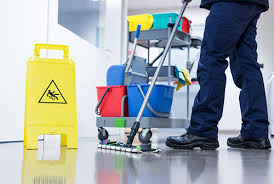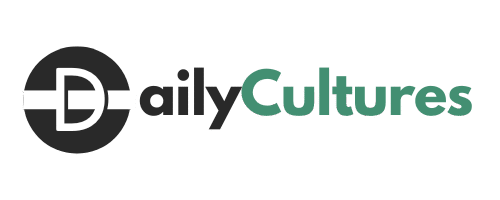Keep Spaces Spotless With Regular Cleaning Care

Introduction: The Power of Routine Maintenance Cleaning
Cleanliness isn’t just about aesthetics—it directly impacts health, productivity, and the longevity of property assets. Whether in commercial settings, residential homes, or industrial environments, maintenance cleaning is essential to keep spaces functional, safe, and welcoming.
Unlike deep cleaning, which targets built-up grime or seasonal messes, maintenance cleaning refers to the routine and scheduled cleaning practices that prevent the buildup of dirt and ensure consistent hygiene over time. When done right, it reduces repair costs, prevents health risks, and maintains the value of your space.
What Is Maintenance Cleaning?
Maintenance cleaning refers to the regular and systematic cleaning activities designed to keep spaces tidy and free from accumulating dust, debris, bacteria, and wear. It includes daily, weekly, or monthly cleaning routines that focus on upkeep rather than restoration.
The goal is prevention—stopping grime, mold, pests, or deterioration before they start. Unlike emergency cleaning or one-time deep services, this approach builds consistency in hygiene, aesthetics, and safety.
Key Areas Covered in Maintenance Cleaning
A well-designed maintenance cleaning plan covers all high-traffic and commonly used areas. Depending on the location, this may include:
1. Residential Maintenance Cleaning
- Dusting surfaces, shelves, and light fixtures
- Sweeping, mopping, and vacuuming floors
- Bathroom and kitchen sanitization
- Window and mirror cleaning
- Appliance surface wipe-downs
2. Office or Commercial Cleaning
- Desk and workstation disinfection
- Restroom maintenance
- Trash collection and bin sanitization
- Common area touchpoint cleaning
- Carpet and upholstery care
3. Industrial and Warehouse Spaces
- Debris removal from floors and storage areas
- Equipment surface cleaning
- Loading dock and entryway sweeping
- Breakroom and restroom hygiene
Why Is Maintenance Cleaning Important?
Health and Hygiene
Regular cleaning reduces allergens, bacteria, and viruses, leading to fewer illnesses. Especially in shared spaces, this is critical for public health and workplace wellness.
Asset Preservation
Dust, moisture, and grime can degrade flooring, electronics, and furniture. Routine care protects your investments and extends the life of your property.
Productivity and Morale
In work environments, clean surroundings lead to higher productivity and better employee satisfaction. It also creates a professional impression on visitors.
Cost-Efficiency
Preventing damage through regular care helps you avoid costly repairs or full replacements in the future.
Long-Tail Keywords Used in Context
To optimize for semantic SEO, we’ve naturally incorporated several long-tail keywords throughout the article:
- “routine office maintenance cleaning services”
- “preventive home cleaning for long-term hygiene”
- “daily cleaning checklist for commercial spaces”
- “cost-effective property cleaning solutions”
- “regular cleaning schedule for better air quality”
These long-tail keywords improve topical depth and increase the article’s relevance in search results.
Building an Effective Maintenance Cleaning Schedule
A one-size-fits-all approach doesn’t work. Cleaning schedules must be tailored to the specific environment. Here’s how to design an effective plan:
1. Assess the Space
Evaluate the type of flooring, furnishings, equipment, and traffic levels. Identify high-touch and high-risk areas.
2. Determine Frequency
Some tasks need daily attention (e.g., floor mopping in busy areas), while others can be weekly or monthly (e.g., window washing or air vent dusting).
3. Assign Responsibilities
Whether handled by in-house staff or outsourced professionals, clear roles and responsibilities ensure consistency and accountability.
4. Use Quality Tools and Products
Ensure the right tools are used for each task—e.g., microfiber cloths for dusting, non-abrasive solutions for electronics, and appropriate PPE where needed.
5. Review and Adjust
Track results and adjust schedules based on seasonal changes, occupancy, and feedback. Maintenance cleaning is a dynamic process.
Eco-Friendly Practices in Maintenance Cleaning
As sustainability becomes a growing concern, many individuals and businesses are choosing eco-friendly cleaning practices, such as:
- Using biodegradable and non-toxic cleaning products
- Reducing water waste with efficient tools
- Reusable microfiber cloths instead of disposable wipes
- Proper recycling and waste segregation
- Energy-efficient vacuum cleaners
These methods reduce environmental impact while still maintaining hygiene standards.
FAQs About Maintenance Cleaning
What is the difference between maintenance cleaning and deep cleaning?
Maintenance cleaning is regular and preventive, focusing on everyday hygiene. Deep cleaning is more intensive and occasional, targeting buildup and hard-to-reach areas.
How often should maintenance cleaning be done?
It depends on the environment. High-traffic areas like offices or kitchens may require daily cleaning, while low-use spaces might only need weekly or bi-weekly attention.
Can maintenance cleaning reduce allergy symptoms?
Yes. Regular dusting, vacuuming, and air filter cleaning remove allergens like pollen, pet dander, and dust mites, improving indoor air quality.
Is maintenance cleaning necessary for vacant properties?
Absolutely. Unoccupied spaces can still collect dust, grow mold, or attract pests. Periodic maintenance keeps them in ready-to-use condition.
Should I hire professionals or do it myself?
For small spaces, DIY cleaning may suffice. However, larger or more complex environments benefit from professional cleaners who bring expertise, equipment, and efficiency.
Conclusion: Clean Smarter, Not Harder
Maintenance cleaning is more than just a chore—it’s a strategy to protect your environment, enhance comfort, and reduce long-term costs. Whether you’re managing a home, an office, or a commercial property, consistent upkeep is the key to long-lasting cleanliness and safety.
By creating a structured routine, using the right tools, and focusing on both hygiene and sustainability, you can maintain spaces that look better, function better, and feel better—every single day.

